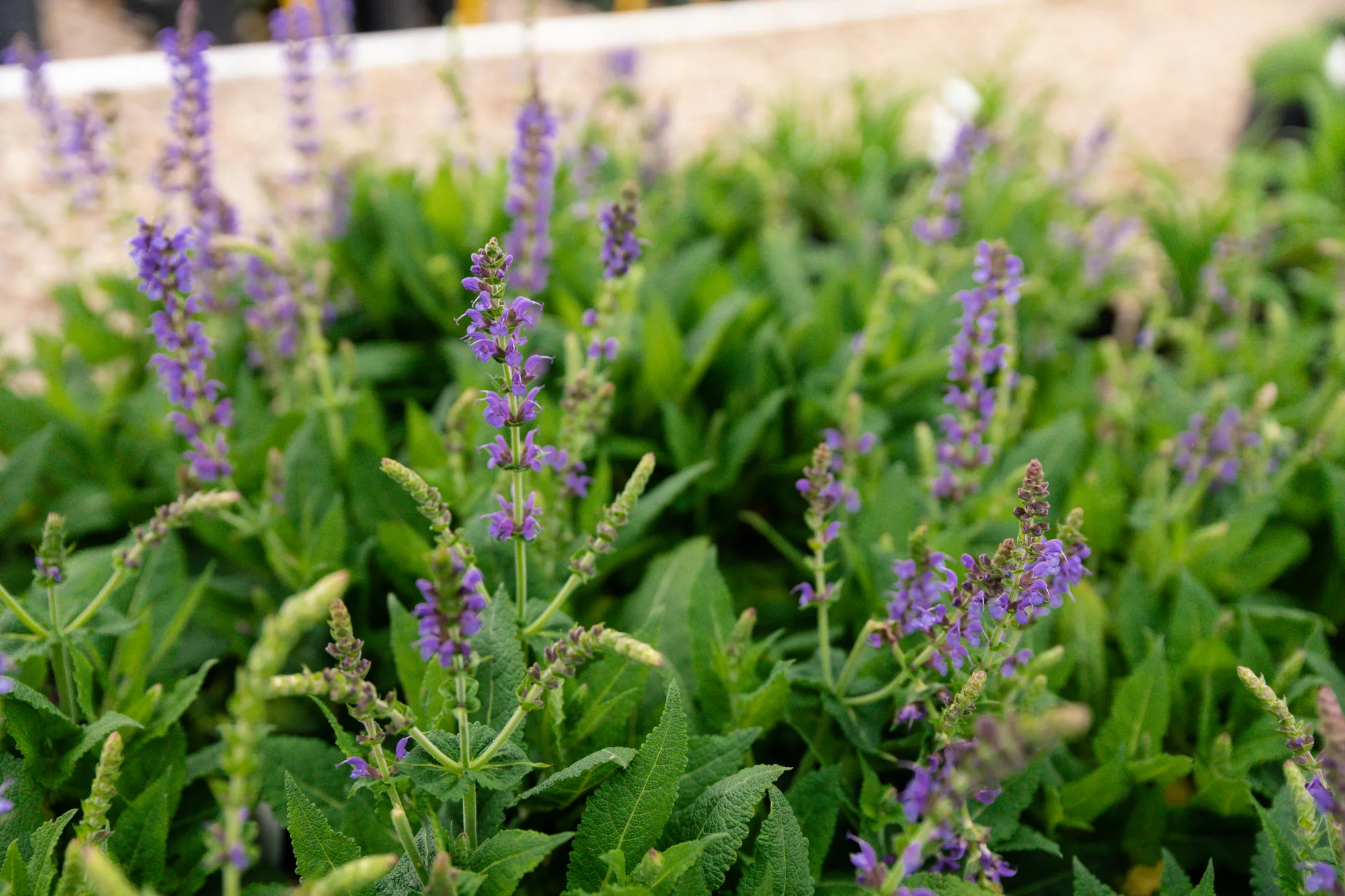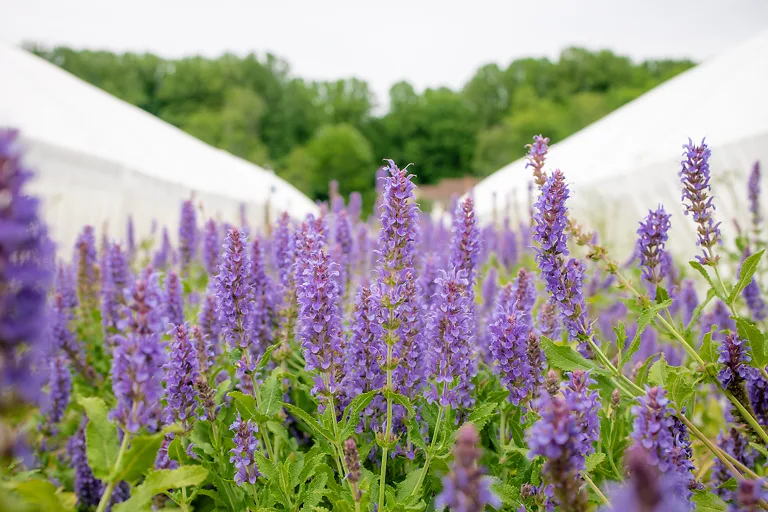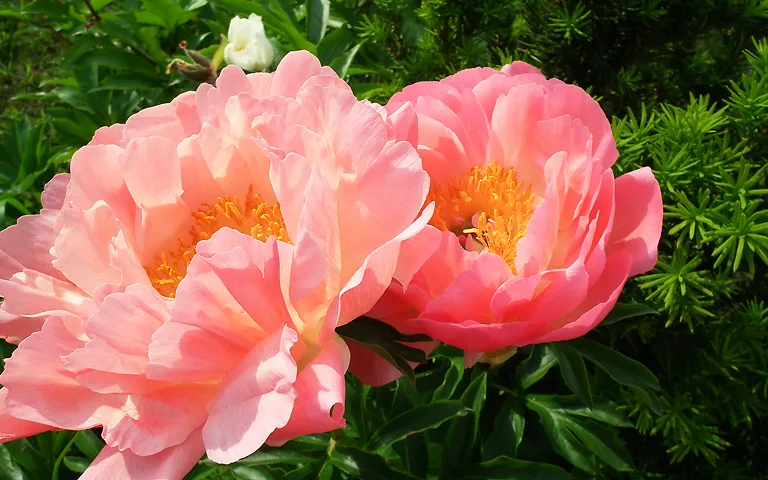
Written by s • Salvia – a Wise Garden Choice
Sage: /seɪdʒ/ noun: an aromatic plant of the genus Salvia, whose greyish-green leaves are used as a culinary herb, native to southern Europe and the Mediterranean. Used in names of aromatic plants of the mint family that resemble sage.
Sagacious: /səˈɡeɪʃəs/ adjective: having or showing keen mental discernment and good judgement; wise or shrewd.
That aromatic plant, Salvia officinalis, certainly belongs in your garden – what else would you use for turkey dressing, or with melted butter on ravioli? But as ornamental gardeners, it is the other species, often called ornamental sage or flowering sage, that we mostly want to talk about here. Grow them and you will indeed see what a sagacious choice they are!
What are Ornamental Sages?
The plant genus Salvia is a large one, with around 1,000 species in it, mostly perennials, but also including shrubs and true annuals. There are 47 species native to North America, but most of these are rarely seen in gardens – surely an opportunity for an enterprising nursery? Plants of sunny meadows, grasslands and rocky places, they are especially notable as a source of that most prized of garden colors – true blue, as well as many shades of purples and violets, and also bright reds. No wonder they have attracted plant breeders for a century now.
What makes sages colorful for so long is that the flowers are carried in permanent cups along the stems. These cluster in whorls around the stem, and flowers open over a long period, each for a few days each. The cups, technically called the calyx, persist, and they are often brightly colored in a deeper or complimentary shade to the flowers. The flowers themselves are fascinating, and worth close examination. They are divided into two parts, a narrow upper lip and a broad lower one, often with a contrast color-splash on it. This is a ‘landing pad’ for pollinating insects. When a bee lands, its weight displaces part of the flower, and a structure tucked in the upper lip comes down, dusting the back of the insect with pollen.
Almost all sages attract large numbers of bees, butterflies and even hummingbirds, adding to their interest and value in the garden.
Let’s take a look at some different ornamental sages that are most likely to be available, and most desirable.
Scarlet Sage – (Salvia splendens) was once the only flowering sage seen. This native of Brazil, an annual in most zones, but hardy in zone 10, is perhaps so widespread that many view it as dull and ugly. Sadly the efforts of breeders to produce more colors and small plants has not helped. Still if you need to temporarily brighten a sunny corner, it can be a useful option. Perhaps avoid the lumpy, very dwarf varieties, and seek out an old variety called ‘Van Houttei’, which grows to around 4 feet tall, flowering mainly in the fall, with long, slightly drooping heads of warm scarlet.
Mealycup Sage – (Salvia farinacea) is a more recently-popular annual, and an easy way to introduce blue into your garden. Native to Mexico, but also to parts of the USA, it is long blooming, beginning when seedlings and often the last thing in bloom when frost arrives. The tall narrow spikes really are true blue, making them very desirable, and one of the few annual flowers popular with perennial gardeners.
Some dead-heading is helpful, but otherwise very easy to grow. Available in a range of heights and shades.
Wood Sage – (Salvia x sylvestris) In this group we find the most widely-grown and most useful of the perennial sages. These plants are generally under-used, and deserve much more prominence, especially in the cooler zones where they thrive. Hardy even in zone 3, they are bushy perennials with leafy lower-halves, and upper halves of long, narrow flower spikes. Generally in flower for about 6 weeks, many will bloom again if dead-headed, though not as strongly or profusely. Still, something in flower for many weeks, just at the cusp, where spring becomes summer, is surely worthy of a place in every garden. Very easy to grow, they simply need sun and a well-drained soil. Although drought tolerant, for maximum blooming some moisture is needed, but don’t overdo it with compost or fertilizers, or the plants will be floppy and need staking.
These plants have been developed over a long period, and some of the first, from German breeders in the middle of the last century, do not have family trees, so their exact origins are unclear. Most are hybrids, with Salvia nemerosa, the European meadow sage, being the most common parent. Other related European species are almost certainly included in most if not all varieties. These plants were once called Salvia x superba – certainly a good description! All three names are seen attached to them, often to the same variety in different sources, so calling them all ‘Salvia x sylvestris’ is the safest and easiest solution.
The first created, and still very desirable, is the East Friesland Sage, (‘Ostfriesland’). With deep purple spikes it is perfect with other flowers, or even along the edges of shrub beds. It was selected by the German perennial breeder Ernst Pagels in 1955.
You can also see in this image how effective these plants are in the garden. Shown here with oranges and yellows, they look just as good with pinks and scarlets.
The following year his mentor, Karl Foerster, released the May Night Sage, (‘Mainacht’) The flowers are brighter, and closer to a true blue.
Both these classic varieties are still very garden-worthy, and have stood the test of time. For slightly more compact varieties, with better re-blooming potential, check out the different Color Spires® varieties on our Salvia page. These are mostly seedlings of the Foerster and Pagels originals, which form the core of almost all breeding withing the meadow sages.
For a smaller plant suitable for container-growing, and one that blooms very early, the April Night Sage is outstanding. Hardly more than a foot tall, the mid-blue spikes appear a month before the classic varieties, with good reblooming potential.
Some botanist have already re-christened them as Salvia, but for most of us the Russian Sages remain as Perovskia atriplicifolia. Close enough, though, to include them here. While the meadow sages have green leaves, what makes Russian Sage so valuable is the amazing silver foliage, perhaps the brightest of all silver-leaf plants. These plants grow into taller, open shrubby plants, with most of them rising to around 4 feet tall and wide by the end of the season. Some, like the Denim ‘n Lace Russian Sage, have deeply-divided leaves, given them a very airy look, and making them interesting even before the flowers appear. You will find our current selection on the Salvia page.
The Russian sages are plants of dry places, and they thrive on hot, sunny slopes, making them great for modern xeric and low-water gardens. They carry long-blooming spikes of flowers that really are blue, blue, blue – there is hardly a bluer flower available outside of those tricky delphiniums. Still not widely seen, these are plants that are addictive – once you grow them you will never stop. Because they are more shrubby, they should be pruned in spring once new growth begins. In colder zones they will be cut back to the ground, but in warmer areas a low framework of branches often remains, producing even larger plants if you need that.







